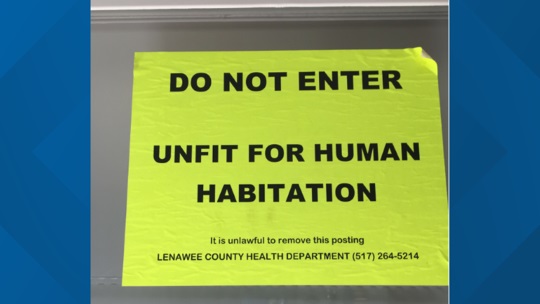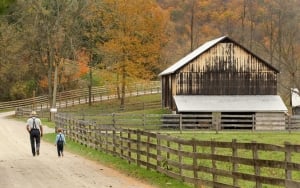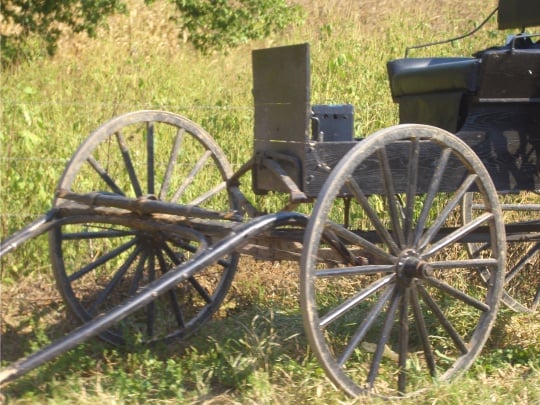Michigan County Seeks Compromise With Amish In Sewage Conflict
 Lenawee County, Michigan authorities hope to find a compromise with Amish over sewage and water violations in an ongoing conflict in this southern Michigan community.
Lenawee County, Michigan authorities hope to find a compromise with Amish over sewage and water violations in an ongoing conflict in this southern Michigan community.
That’s according to a new article in the Daily Telegram. The report contains more details about how waste is handled by the Amish:
The health department said it started receiving complaints in 2015 about how the Amish were disposing of their waste, according to a news release. Recently filed court documents stated sewage was being discharged on the ground, which violates county health code.
One Amish couple told The Daily Telegram earlier this month they dispose of their waste by dumping it on a livestock manure pile. Hall said other Amish families dispose of their waste in similar ways.
The main problem with this method is that the waste is untreated. Michigan public health code does not allow for human waste or gray water — wastewater from bathtubs and sinks — to be disposed of in such a way, Hall said.
What sort of deal is the county proposing?
One compromise that has been offered to the Amish is to install septic tanks underneath the outhouses that is then pumped out by a licensed professional, according to Martin Marshall, county administrator. These are called vault privies and are sometimes used in campgrounds and roadside rest areas.
A nearby conservative Amish settlement handles it this way:
This is how Amish in Branch County dispose of their waste. Paul Andriacchi, environmental health director for the county, said the Amish are required to have a privy. A licensed septic professional then pumps out the waste and that waste is then treated, just like at a municipal water treatment plant.
Andriacchi added the Amish are required to undergo inspections and hold all the same permits as anyone else, though provisions exist in the Branch County health code that allow for things such as the vault-style privy.
Amish have already refused potential compromises:
However, in Lenawee County that was not something that could be agreed upon, Marshall said.
Marshall said Amish families moved into two separate existing homes in the county that had septic systems and wells.
An option given to those families was to build outhouses on top of the existing septic tanks.
“That was not an acceptable alternative,” Marshall said, and no agreement could be made.
The article also goes into detail on how the Amish get their water, and how their hand pump method does not comply with county standards.
The county says that the way the Amish do things here presents a danger both to neighboring residents, and to themselves as well.
Amish remain in their homes illegally
No homes seem to be in imminent danger of being destroyed, following the recent ACLU-backed counter-lawsuit against the county.
The county also put out a news release recently which “stated no home has ever been demolished for noncompliance of environmental health code.”

However, the fact is that under the present health department order, Amish are living at their homes illegally:
The homes have been ruled unfit for human habitation. Health code allows for this if homes do not meet the county standards for adequate water and sewage systems. The health department can issue orders requiring people to vacate the premises if these conditions are not met and have done so at the Amish properties. It is unlawful to live at a residence if this order has been issued.
This remains a precarious legal situation, and will need to be resolved one way or another. Hopefully that happens with no people displaced or homes demolished.






Sanitation
Sometimes I think the Amish are being contrary just for contrariness sake! Since when are health and sanitation so regulated in the Bible that living a sanitary and healthy lifestyle go against the “simple life”? Where in the Bible does it say it is right to impose antiquated and unsafe sanitation practices onto others? Just because dumping one’s sewage onto pasture or manure was acceptable in the old days, it does not mean it is acceptable or safe, today.
Might be more about sheer resistance to any change in general…especially that imposed from outside. I don’t think anything direct from the Bible is dictating the Amish stance on sewage disposal here. But looking at it from a non-conservative-Amish perspective, the overall point you make is hard to argue with.
Sanitation
Perhaps, but, didn’t Jesus say something about the obligation to obey man-made laws? Is this contrariness or an unwillingness to spend money?
Put no other god before me
When you use a service such as a grid service which requires a commitment even if that commitment is forced you are actually creating an idol so you are putting another God before your God. So I can see where are the Amish have a religious problem with the electrical grid with the sewage grid because by requiring a sewage service they’re having to work to pay for that service that makes that service and Idol. It’s basically the same with all things some people idolize food that’s where gluttony comes from some people idolize their shoes and they work for more than what they need putting it over God. It would be unrealistic to say don’t don’t use a service but it’s not unrealistic to say use a service only as needed and not just as wanted in all reality we need the electrical grid people want the electrical grid. You don’t need a service for sewage there are ways to handle sewage such as burning that don’t require you to contract into even if it’s not a contract don’t require you to use them regularly
Waste etc
The word of “contrarinous” to describe their resistance is a negative connotation imho. It seems to me that their resistance to comply with our standards is exactly what it is. They see Small compliances with the English is a slippery slope to full compliance with our laws & way of life. And I don’t think we have any right to infringe of their beliefs. HOWEVER…the very basic sanitation that would also infringe on us outsiders IS something of a conundrum. I think it will be worked out with respect on both sides. But I do understand their wariness to comply.
Sanitation
It might be a slippery slope for them, but, I think it’s either contrariness or a selective interpretation of what being “plain” means. Not to mention, a selective interpretation of respect for one’s neighbors. As I said in my previous comment, Jesus did mention compliance with man-made laws. The Amish have been bucking the “English” system every chance they get. Some Amish groups make a big deal out of having to place warning signs on their buggies. There is nothing “plain” about being unsafe! They risk their lives, the lives of their children, the life of the horse(s), and the life of the driver who runs into them because they couldn’t see them. This is a serious lack of common sense!